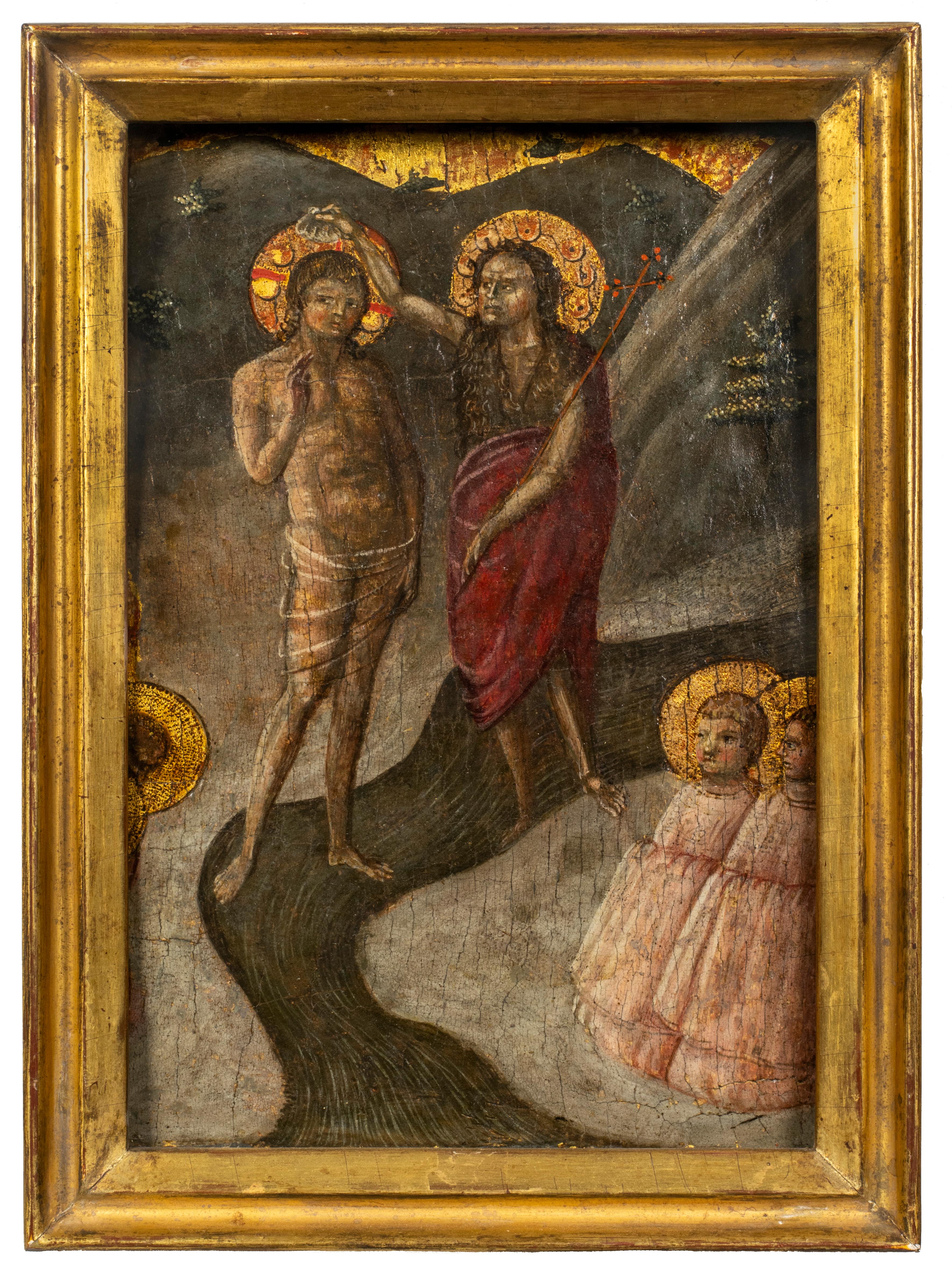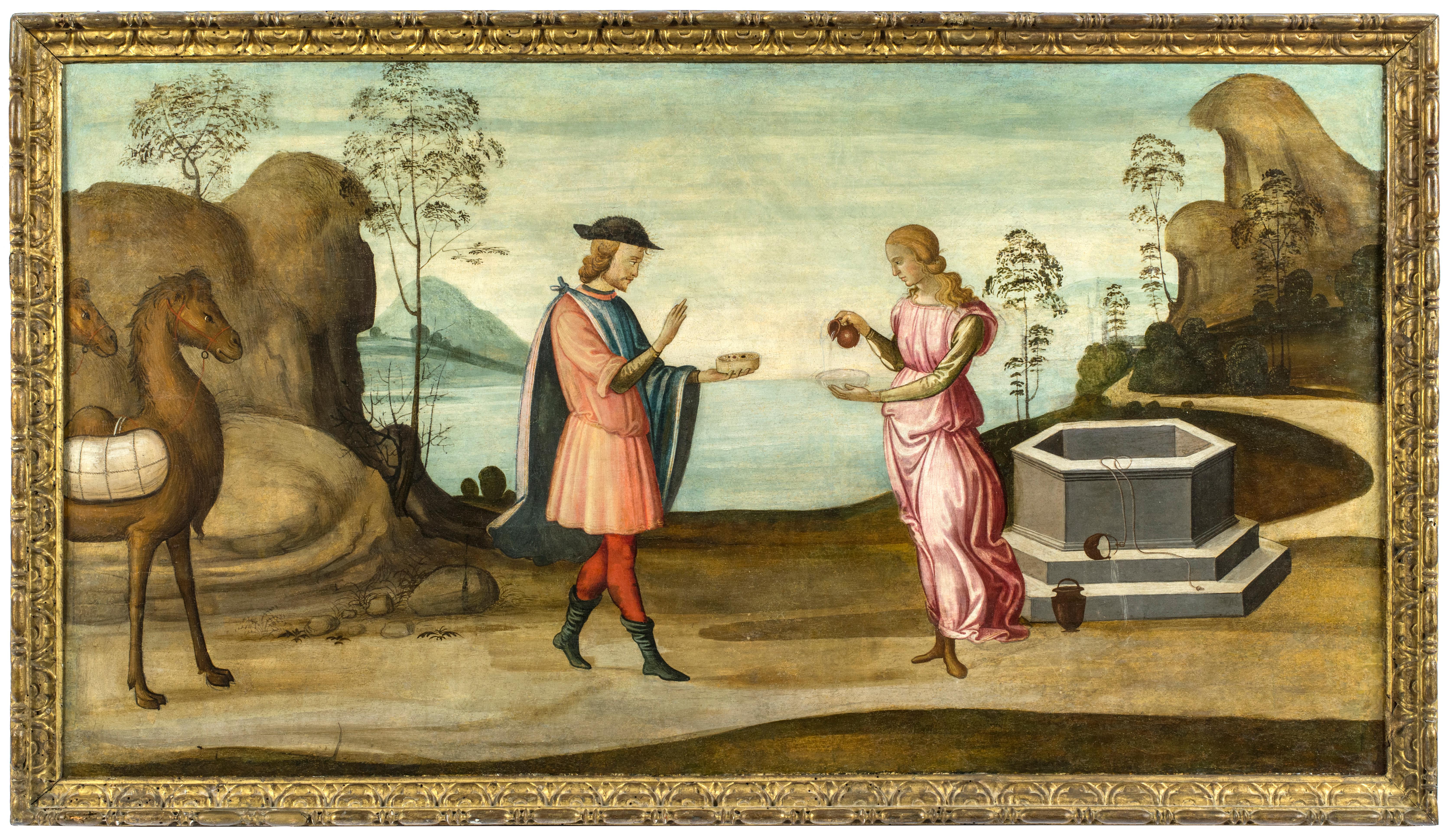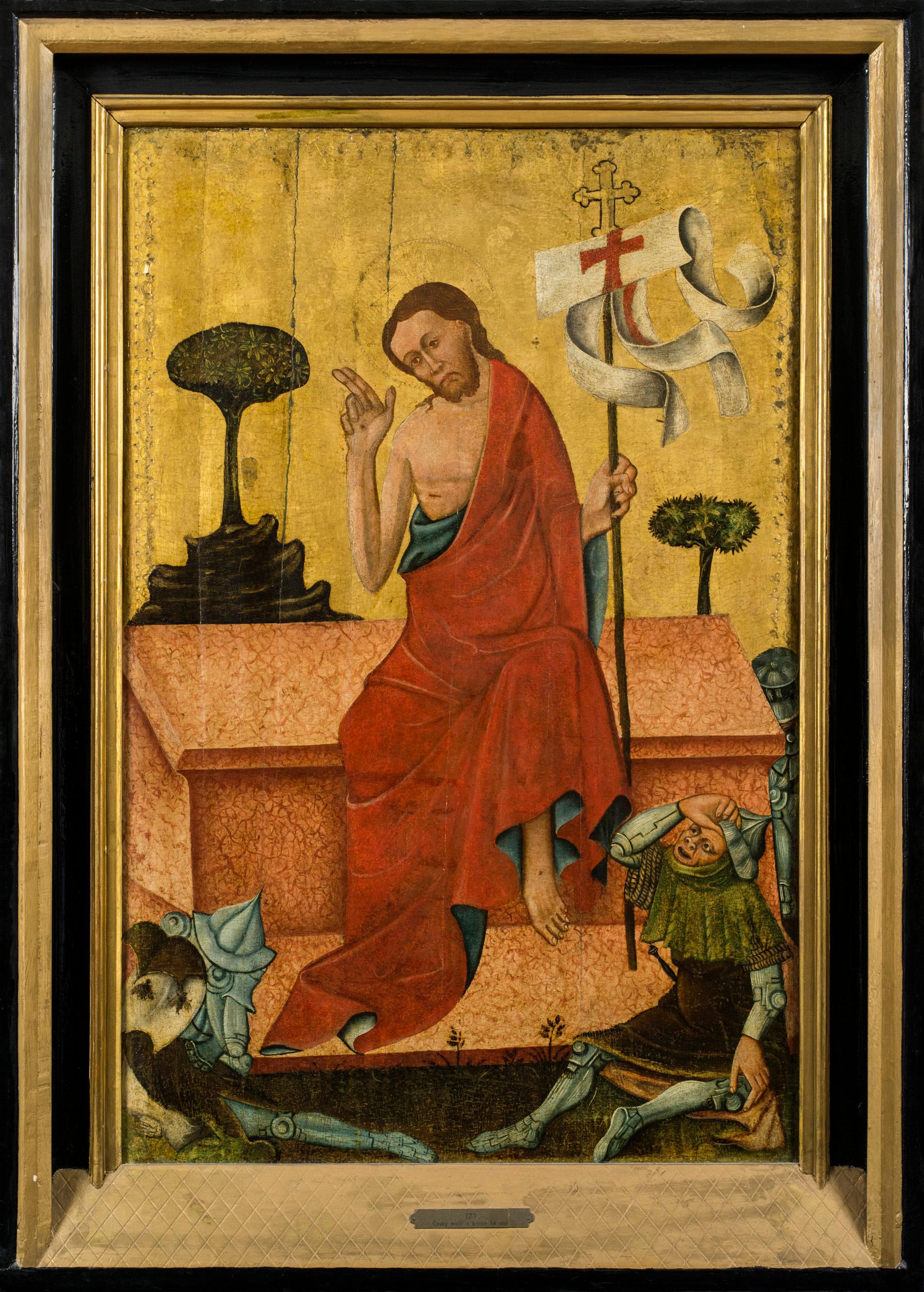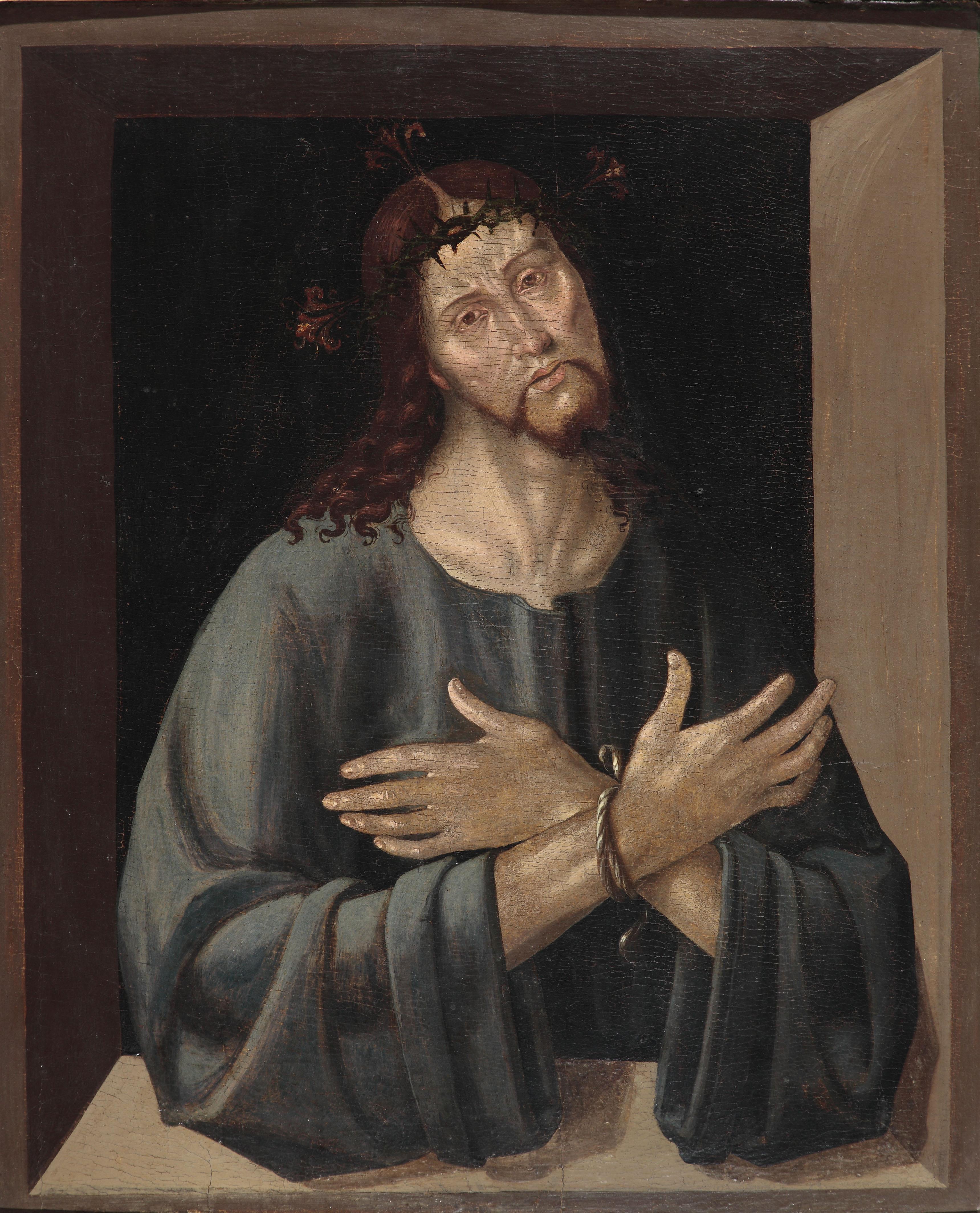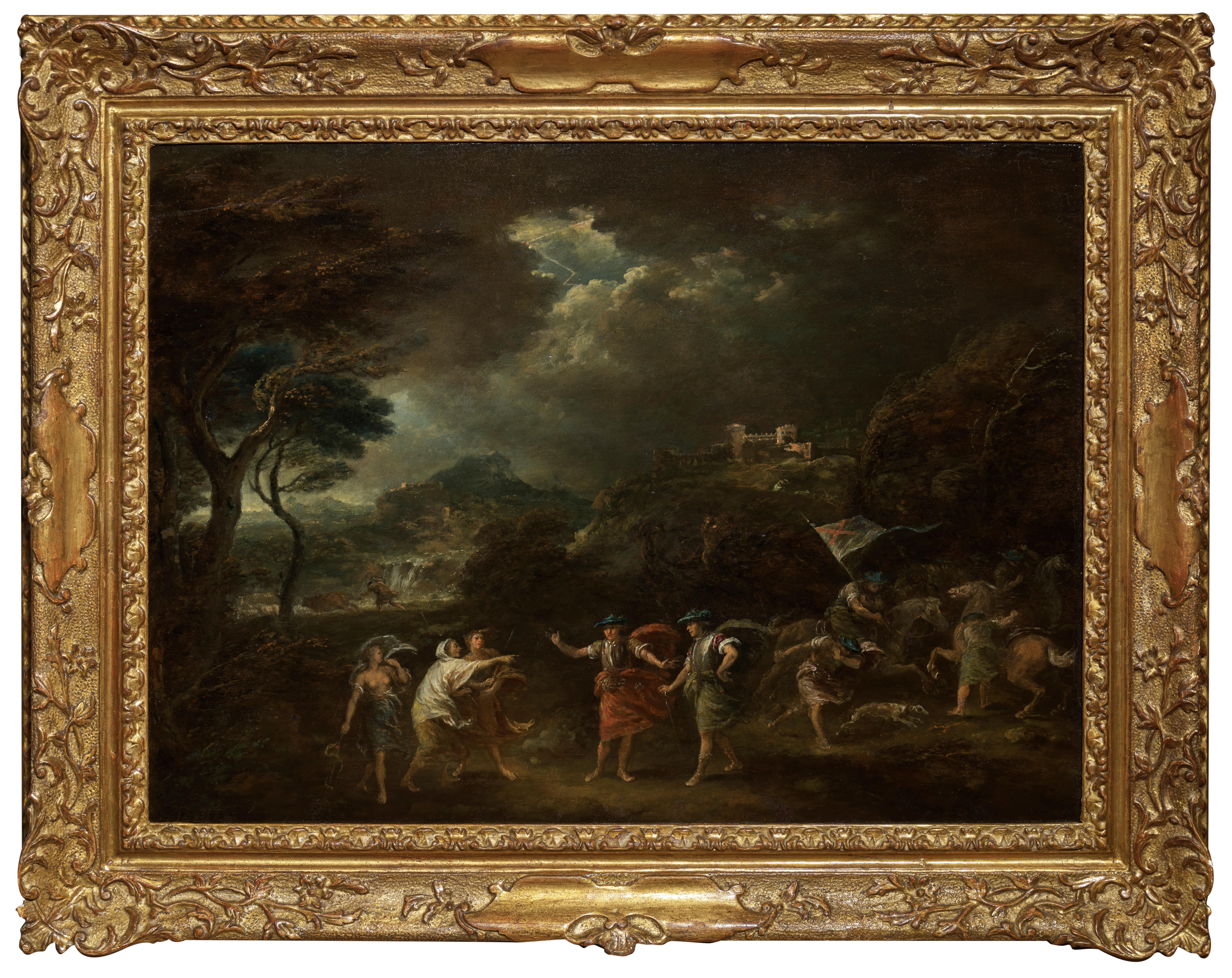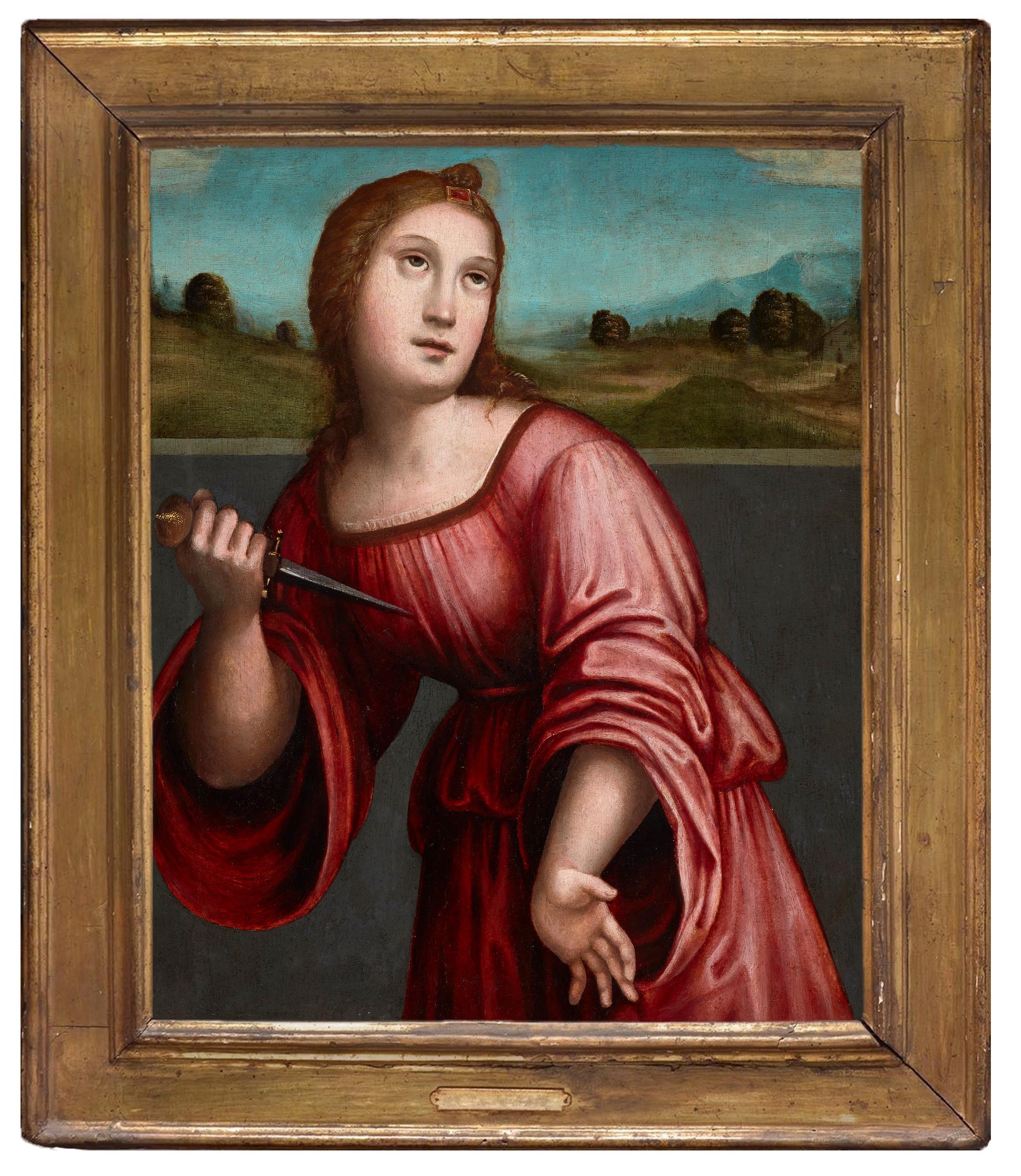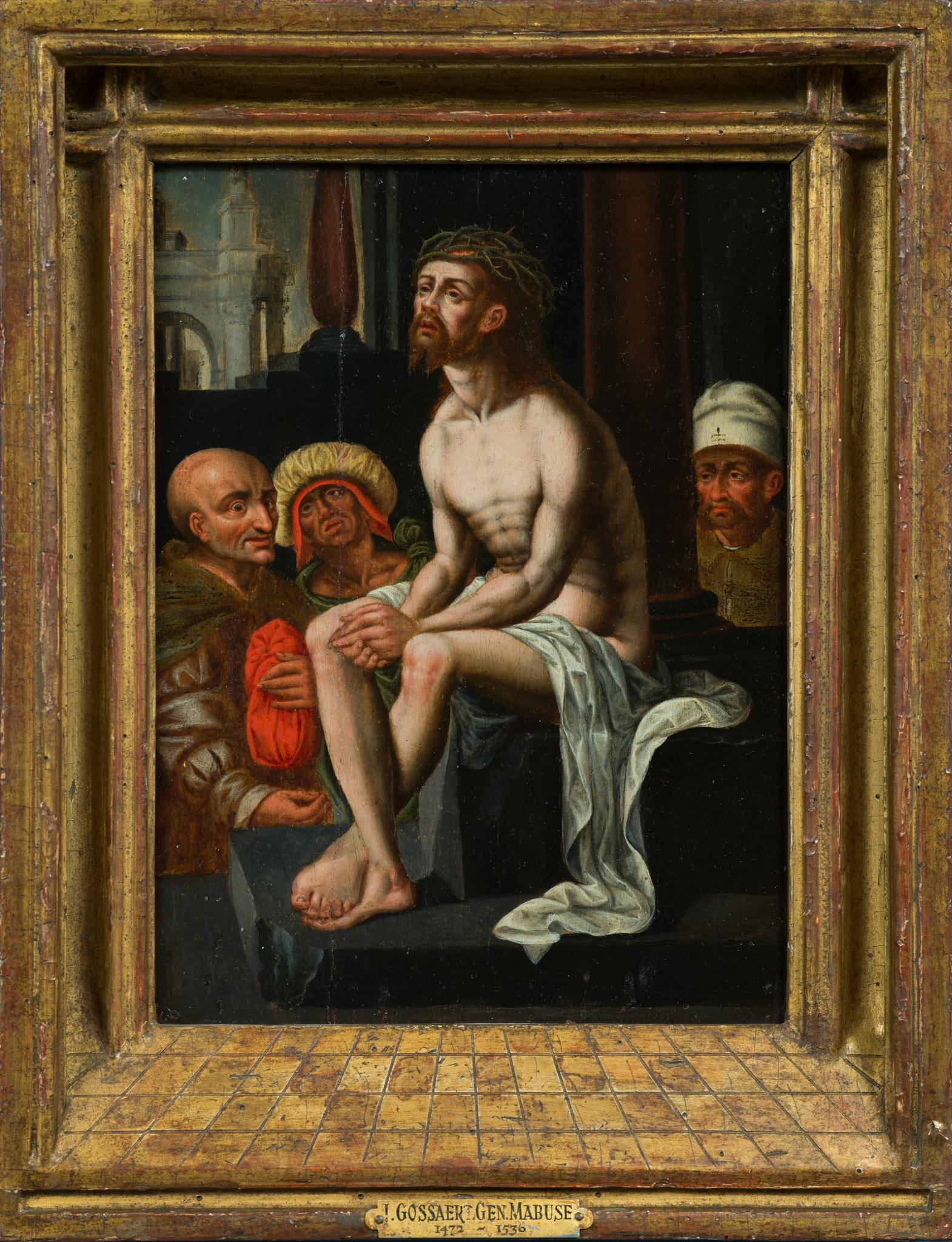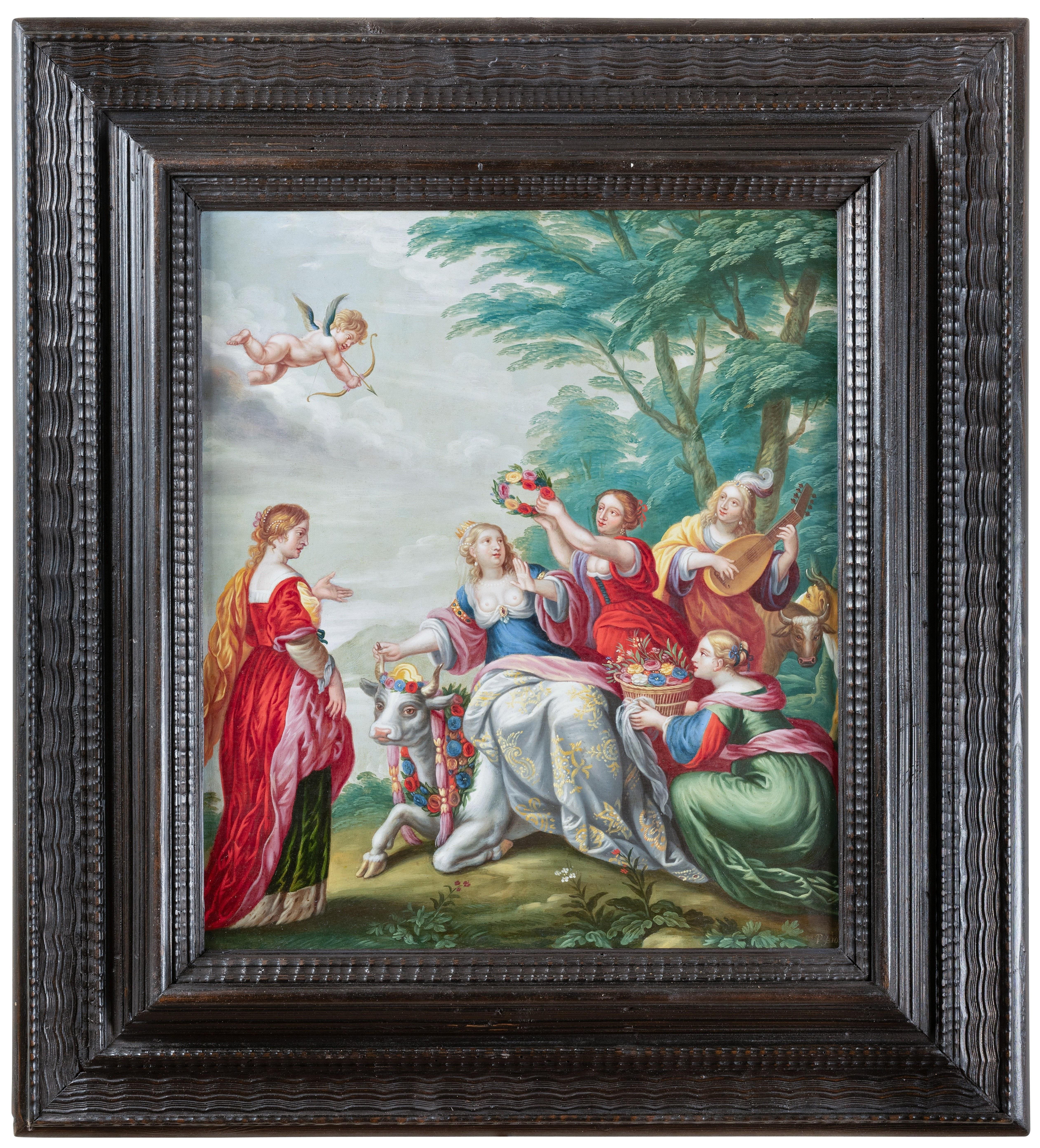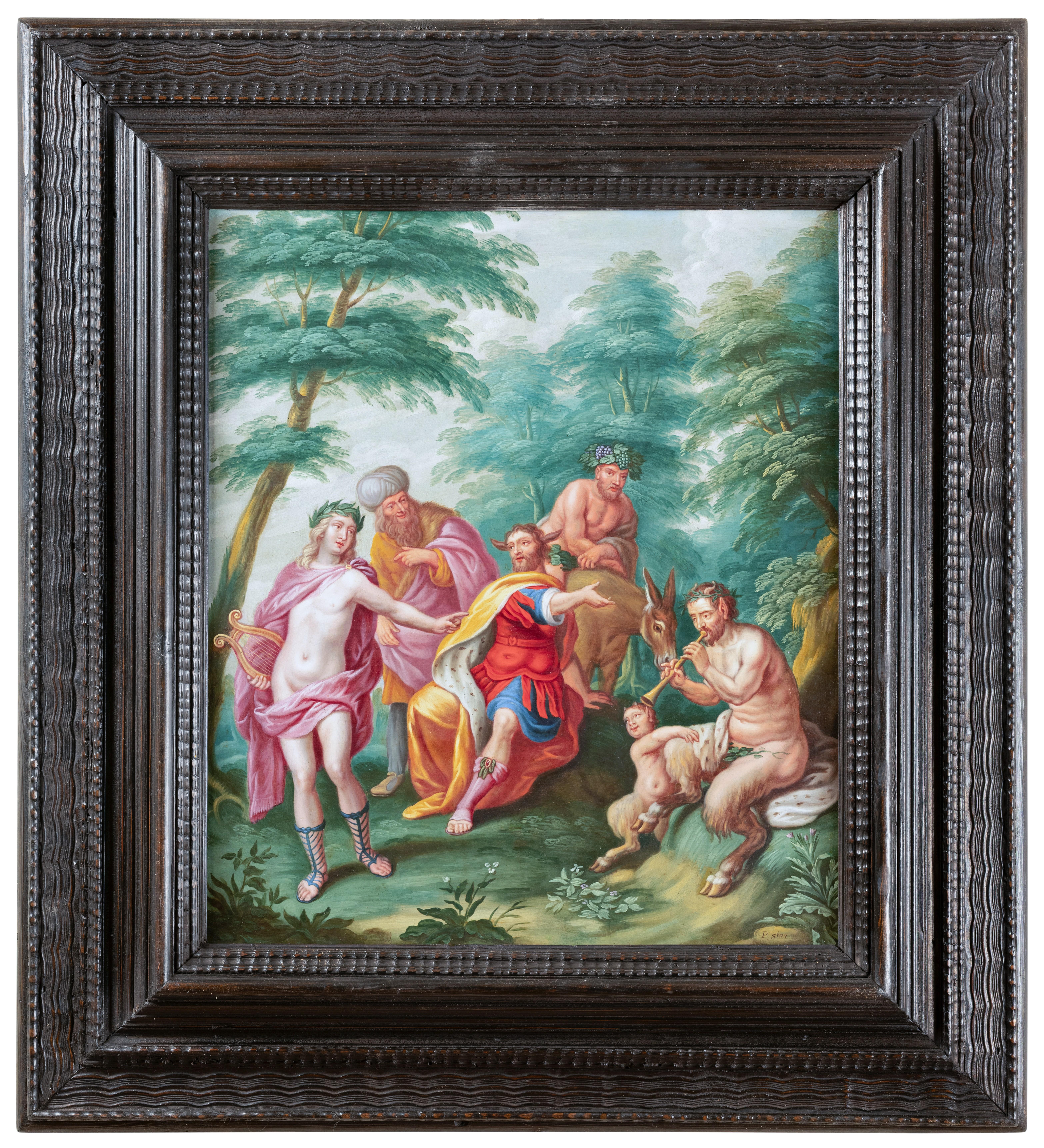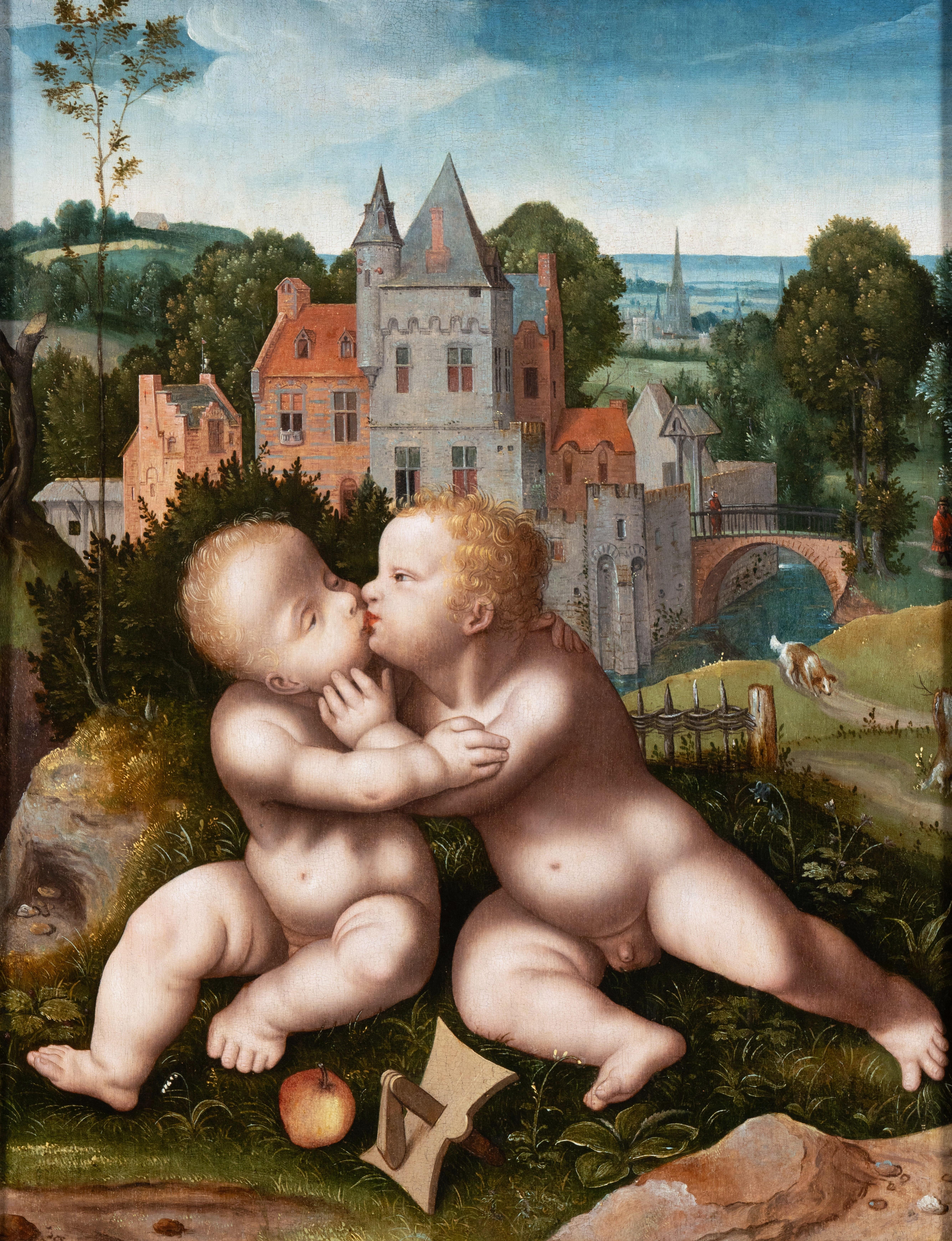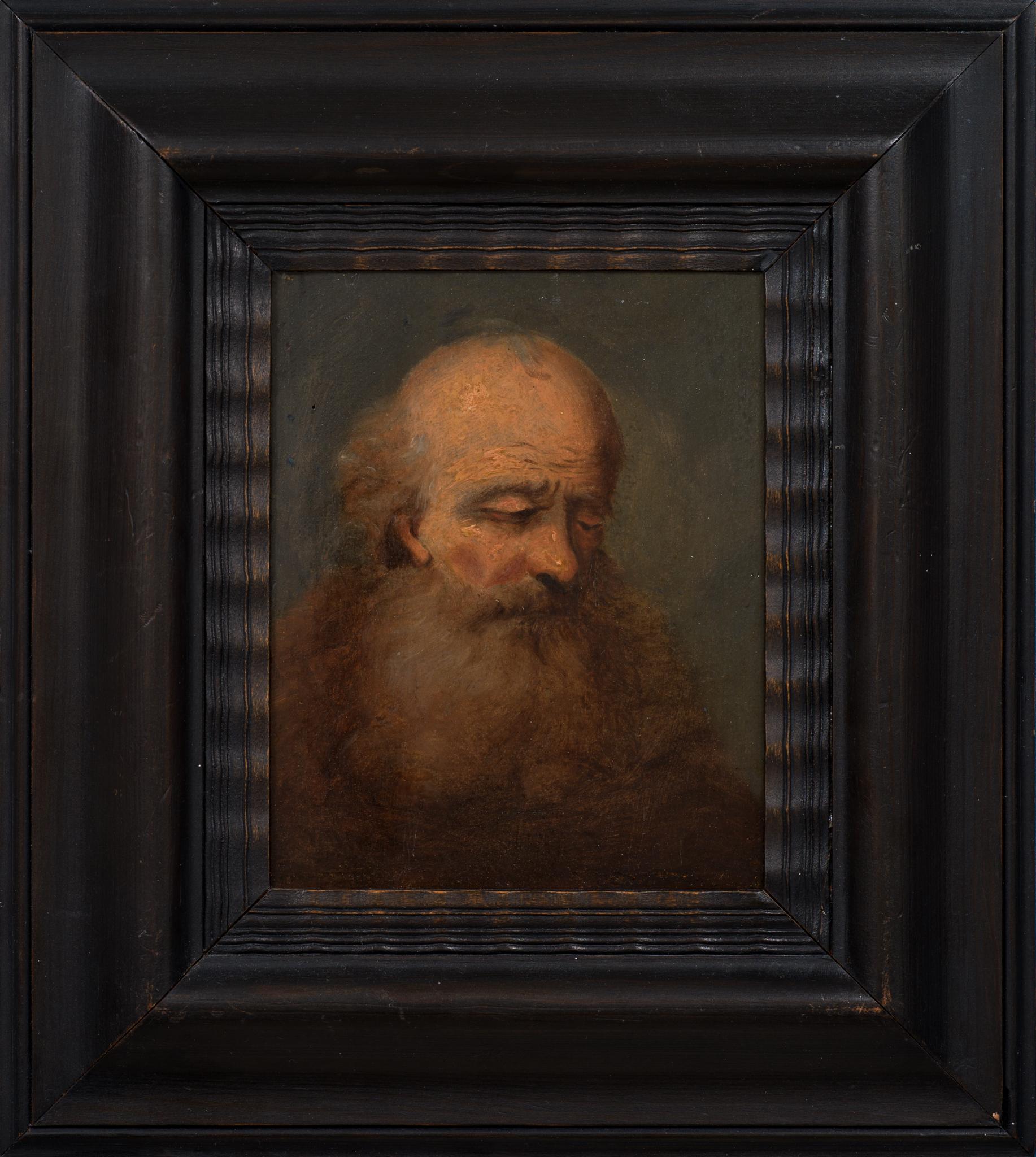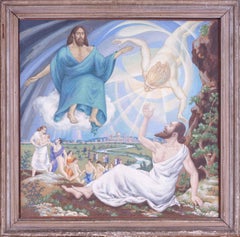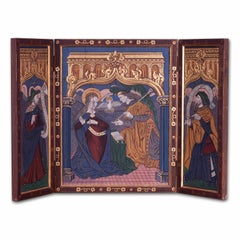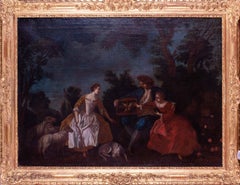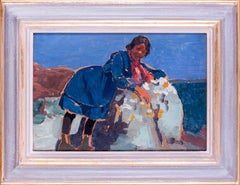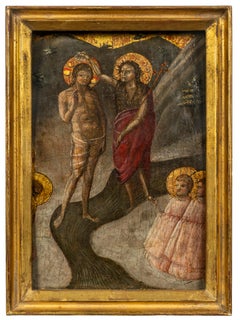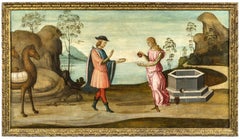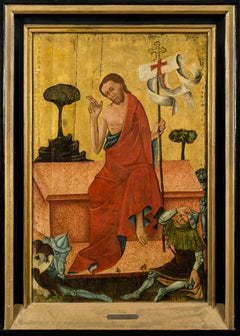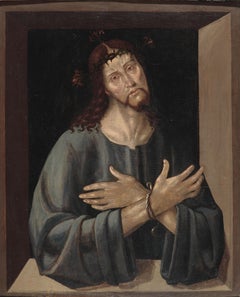
Circa 1400, Spanish school of 'The Prophet Daniel', tempera on panel with gildin
View Similar Items
Want more images or videos?
Request additional images or videos from the seller
1 of 11
UnknownCirca 1400, Spanish school of 'The Prophet Daniel', tempera on panel with gildin
About the Item
- Dimensions:Height: 35.25 in (89.54 cm)Width: 10.63 in (27.01 cm)Depth: 1 in (2.54 cm)
- Medium:
- Movement & Style:
- Period:
- Condition:The painting has been recently stabilised and cleaned up. There are missing pieces of the composition, It was decided not to infill these to retain an authentic integrity. The painting has cracked and there are chips.
- Gallery Location:Petworth, GB
- Reference Number:1stDibs: LU54039091332
About the Seller
4.9
Gold Seller
Premium sellers maintaining a 4.3+ rating and 24-hour response times
Established in 2010
1stDibs seller since 2017
260 sales on 1stDibs
Typical response time: 2 hours
Authenticity Guarantee
In the unlikely event there’s an issue with an item’s authenticity, contact us within 1 year for a full refund. DetailsMoney-Back Guarantee
If your item is not as described, is damaged in transit, or does not arrive, contact us within 7 days for a full refund. Details24-Hour Cancellation
You have a 24-hour grace period in which to reconsider your purchase, with no questions asked.Vetted Professional Sellers
Our world-class sellers must adhere to strict standards for service and quality, maintaining the integrity of our listings.Price-Match Guarantee
If you find that a seller listed the same item for a lower price elsewhere, we’ll match it.Trusted Global Delivery
Our best-in-class carrier network provides specialized shipping options worldwide, including custom delivery.More From This Seller
View AllArt Deco British symbolist painting 'Triune' by Robert Arthur Wilson
By Robert Arthur Wilson
Located in Petworth, West Sussex
This artwork is a captivating representation of The Trinity, created by the British artist Robert Arthur Wilson. It vividly demonstrates Wilson's profound engagement with avant-garde theories related to colour, music, and emotion, which had a significant impact on his artistic vision. Wilson's exploration of colour abstraction was groundbreaking and played a pivotal role in establishing him as one of the most promising artists of his time. His innovative approach to colour abstraction is evident not only in the portrayal of the sky but also in the overall composition of this piece.
Robert Arthur Wilson (British, 1884 – 1979)
Triune
Tempera on panel
Signed ‘R.A. Wilson’ (lower right) and titled on a label on the reverse
29.1/8 x 29.1/8 in. (69 x 69 in. )
Robert Arthur Wilson was a British painter. Wilson was born in Sunderland in 1884. Leaving school at the age of thirteen, he was employed for a time as a bookkeeper before beginning an apprenticeship under a local sign...
Category
20th Century Symbolist Figurative Paintings
Materials
Tempera, Panel
Turn of the 20th Century French tryptic depicting the Annunciation with 2 saints
Located in Petworth, West Sussex
A. Lion (French, c. 1900)
A tryptic depicting the Annunciation flanked by two Saints
Signed “A. LION” (to the left of Mary)
Oil on board
Framed dimensions 23. ½ x 37. ½ in. (60 x 95...
Category
19th Century Old Masters Figurative Paintings
Materials
Oil, Board
French Old Master oil painting of 3 figures releasing a dove
By Jean-Antoine Watteau
Located in Petworth, West Sussex
Circle of Jean-Antoine Watteau (French, 1684-1721)
Freeing a dove
Oil on canvas
27.3/4 x 38.1/8 in. (70 x 96.8 cm.)
Possible repair to upper right. In overall good order for the age...
Category
17th Century Old Masters Figurative Paintings
Materials
Canvas, Oil
Cornish 20th Century artist Frank Dobson 'Newlyn Girl', oil painting
By Frank Dobson
Located in Petworth, West Sussex
Frank Dobson RA (British, 1886 – 1963)
Newlyn girl
Oil on panel
9.3/4 x 13.3/4 in. (24.7 x 35.5 cm.)
Provenance: From the collection of Janet Beat
Bonhams London
Frank Dobson (1886...
Category
20th Century Modern Figurative Paintings
Materials
Oil, Panel
British contemporary oil painting by Simeon Stafford 'Cambourne Rally'
By Simeon Stafford
Located in Petworth, West Sussex
Simeon Stafford (British, b.1956)
Cambourne rally
Oil on panel
Signed and dated `SIMEON!/14.1.21’ (lower right) further signed on the reverse of the panel
8 x 10 in. (20.3 x 25.3 cm.)
Simeon Stafford is a British Painter, born in 1956 he started painting at age 14. He was encouraged to paint by LS...
Category
21st Century and Contemporary English School Figurative Paintings
Materials
Oil, Panel
20th Century British artist Jenny Ogg oil on panel, lady sunbathing
Located in Petworth, West Sussex
Jenny Ogg (British school, 20th Century)
Sunbathing
oil on panel
signed 'J Ogg' (lower right) and bearing label for Grants Fine Art Gallery Newcastle (to the reverse)
Category
20th Century Surrealist Figurative Paintings
Materials
Oil, Panel
You May Also Like
Baptism of Christ
Located in New York, NY
Provenance:
Achillito Chiesa, Milan
Luigi Albrighi, Florence, by 1 July 1955
with Marcello and Carlo Sestieri, Rome, 1969
Private Collection, Connecticut
Exhibited:
Mount Holyoke College Art Museum, South Hadley, Massachusetts (on loan, 2012)
Literature:
Carlo Volpe, “Alcune restituzioni al Maestro dei Santi Quirico e Giulitta,” in Quaderni di Emblema 2: Miscellanea di Bonsanti, Fahy, Francisci, Gardner, Mortari, Sestieri, Volpe, Zeri, Bergamo, 1973, pp. 19-20, fig. 18, as by the Master of Saints Quiricus and Julitta (now identified as Borghese di Piero).
This fine predella panel depicting the Baptism...
Category
15th Century and Earlier Old Masters Figurative Paintings
Materials
Tempera, Wood Panel
Rebecca at the Well
Located in New York, NY
Provenance:
Dr. James Henry Lancashire, Manchester-by-the-Sea, Massachusetts, by 1925; probably by descent to:
Private Collection, Cumberland Foreside, Maine, until 2018
This unpublished panel is a characteristic work of the Master of the Apollo and Daphne Legend, an anonymous Florentine painter in the circle of Bartolommeo di Giovanni, Domenico Ghirlandaio, and Sandro Botticelli. The artistic personality of the Master of the Apollo and Daphne Legend was independently recognized by Everett Fahy and Federico Zeri at roughly the same moment in time. Fahy originally dubbed this artist the Master of the Ryerson Panels but later adopted Zeri’s name for the artist, which derives from his eponymous works from the Samuel H. Kress collection (Figs. 1-2). Fahy posited that the artist was most likely a pupil of Ghirlandaio active from roughly 1480 to 1510, and that he may be identifiable with one of Ghirlandaio’s documented pupils to whom no works have been securely attributed, such as Niccolò Cieco, Jacopo dell’Indaco, or Baldino Baldinetti. The present painting was first attributed to this master by Everett Fahy in 1989, who became aware of its existence only after publishing his definitive studies on the artist.
The surviving body of work by the Master of the Apollo and Daphne Legend is largely composed of series of panels treating the same theme. In addition to the works illustrating the legend of Apollo and Daphne, there are also series on the themes of Susanna and the Elders and the story of Saint Joseph, among others. The subject of the present panel is drawn from Genesis 24, the story of Isaac. It is possible that our painting relates to another work by the artist depicting the Sacrifice of Isaac formerly in the collection of E. A. McGuire in Dublin, Ireland (Fig. 3), and that these two panels were originally part of a decorative scheme based on the story of Isaac.
Although the Master’s paintings of this type have traditionally been considered painted fronts of wedding chests, known as cassoni, the scale of these paintings and the fact that they are often part of a series indicates that they are more likely spalliera panels—paintings set into furniture or the wainscoting of a room. The biblical episode depicted in this painting centers on the theme of marriage, which suggests that this work was likely commissioned for the domestic interior of a newly married couple. The Master has transcribed into paint even the minute details of this Old Testament story, in which Abraham sends a servant to travel by camel to the land of his father and seek out a wife for his son Isaac. The servant is here shown at the well...
Category
15th Century and Earlier Old Masters Figurative Paintings
Materials
Oil, Tempera, Wood Panel
The Resurrection of Christ
Located in New York, NY
Provenance:
with “Mr. Scheer,” Vienna, by July 1918; where acquired by:
Jindřich Waldes, Prague, 1918–1941; thence by descent to:
Private Collection, New York
Literature:
Rudolf Kuchynka, “České obrazy tabulové ve Waldesově obrazárně,” Památky archeologické, vol. 31 (1919), pp. 62-64, fig. 5.
Jaroslav Pešina, “K datování deskových obrazů ve Waldesově obrazárně,” Ročenka Kruhu pro Pěstování Dějin Umění: za rok (1934), pp. 131-137.
Jaroslav Pešina, Pozdně gotické deskové malířství v Čechách, Prague, 1940, pp. 150-151, 220.
Patrik Šimon, Jindřich Waldes: sběratel umění, Prague, 2001, pp. 166, 168, footnote 190.
Ivo Hlobil, “Tři gotické obrazy ze sbírky Jindřicha Waldese,” Umění, vol. 52, no. 4 (2004), p. 369.
Executed sometime in the 1380s or 1390s by a close associate of the Master of the
Třeboň Altarpiece, this impressive panel is a rare work created at the royal court in Prague and a significant re-discovery for the corpus of early Bohemian painting. It has emerged from an American collection, descendants of the celebrated Czech industrialist and collector Jindřich Waldes, who died in Havana fleeing Nazi-occupied Europe.
The distinctive visual tradition of the Bohemian school first began to take shape in the middle of the fourteenth century after Charles IV—King of Bohemia and later Holy Roman Emperor—established Prague as a major artistic center. The influx of foreign artists and the importation of significant works of art from across Europe had a profound influence on the development of a local pictorial style. Early Italian paintings, especially those by Sienese painters and Tommaso da Modena (who worked at Charles IV’s court), had a considerable impact on the first generation of Bohemian painters. Although this influence is still felt in the brilliant gold ground and the delicate tooling of the present work, the author of this painting appears to be responding more to the paintings of his predecessors in Prague than to foreign influences.
This Resurrection of Christ employs a compositional format that was popular throughout the late medieval period but was particularly pervasive in Bohemian painting. Christ is shown sitting atop a pink marble sarcophagus, stepping down onto the ground with one bare foot. He blesses the viewer with his right hand, while in his left he holds a triumphal cross with a fluttering banner, symbolizing his victory over death. Several Roman soldiers doze at the base of the tomb, except for one grotesque figure, who, beginning to wake, shields his eyes from the light and looks on with a face of bewilderment as Christ emerges from his tomb. Christ is wrapped in a striking red robe with a blue interior lining, the colors of which vary subtly in the changing light. He stands out prominently against the gold backdrop, which is interrupted only by the abstractly rendered landscape and trees on either side of him.
The soldiers’ armor is rendered in exacting detail, the cool gray of the metal contrasting with the earth tones of the outer garments. The sleeping soldier set within a jumble of armor with neither face nor hands exposed, is covered with what appears to be a shield emblazoned with two flies on a white field, somewhat resembling a cartouche (Fig. 1). This may be a heraldic device of the altarpiece’s patron or it may signify evil, referencing either the Roman soldiers or death, over both of which Christ triumphs.
This painting formed part of the collection assembled by the Czech industrialist and founder of the Waldes Koh-i-noor Company, Jindřich Waldes, in the early twentieth century. As a collector he is best remembered for establishing the Waldes Museum in Prague to house his collection of buttons (totaling nearly 70,000 items), as well as for being the primary patron of the modernist painter František Kupka. Waldes was also an avid collector of older art, and he approached his collecting activity with the goal of creating an encyclopedic collection of Czech art from the medieval period through to the then-present day. At the conclusion of two decades of collecting, his inventory counted 2331 paintings and drawings, 4764 prints, and 162 sculptures. This collection, which constituted the Waldesova Obrazárna (Waldes Picture Gallery), was first displayed in Waldes’ home in Prague at 44 Americká Street and later at his newly built Villa Marie at 12 Koperníkova Street. This Resurrection of Christ retains its frame from the Waldes Picture Gallery, including its original plaque “173 / Česky malíř z konce 14 stol.” (“Czech painter from the end of the 14th century”) and Waldes’ collection label on the reverse.
The Resurrection of Christ was one of the most significant late medieval panel...
Category
15th Century and Earlier Old Masters Paintings
Materials
Tempera, Panel
15th Century By Maestro della Pala Sforzesca Ecce Homo Tempera on Panel
Located in Milano, Lombardia
15th Century Maestro della Pala Sforzesca
Title: Ecce Homo
Medium: Tempera on Panel
Dimensions: without frame 64.9 x 53.2 – with frame 82 x 70 x 5 cm
Beautiful "cassetta" frame in e...
Category
15th Century and Earlier Old Masters Figurative Paintings
Materials
Tempera, Panel
Macbeth and the Three Witches a Painting on Panel by Francesco Zuccarelli
By Francesco Zuccarelli
Located in PARIS, FR
This painting, created during Zuccarelli's stay in England, represents the decisive moment when Macbeth, together with Banquo, meets the three witches who announce that he will be Ki...
Category
1760s Old Masters Landscape Paintings
Materials
Oil, Wood Panel
Lucretia, by Giacomo Raibolini Francia. Detto il Francia. Oil on panel, framed
Located in New York, NY
Giacomo used to paint with his brother Giulio, identifying their works with the monogram «I I». The strong influence of his father, Francesco, is undeniable in all his works, althoug...
Category
16th Century Old Masters Figurative Paintings
Materials
Oil, Wood Panel
Recently Viewed
View AllMore Ways To Browse
Picasso Vollard
3 Dimensional Wall Art
Ceramics Miami
M Maurice
Portrait Of Maurice
Sculpture Knife
St Mary Of The Woods
Supreme Print
The Ghost Story
Vintage Cars 1950S
Vintage Poster Washington
Vintage Surface Mount Lighting
Vintage Union Posters
Woman Hair Nude
Expressionist Woodcut
Four Poster Be
Hanging Light Sculpture
Modernist Painted Plates
